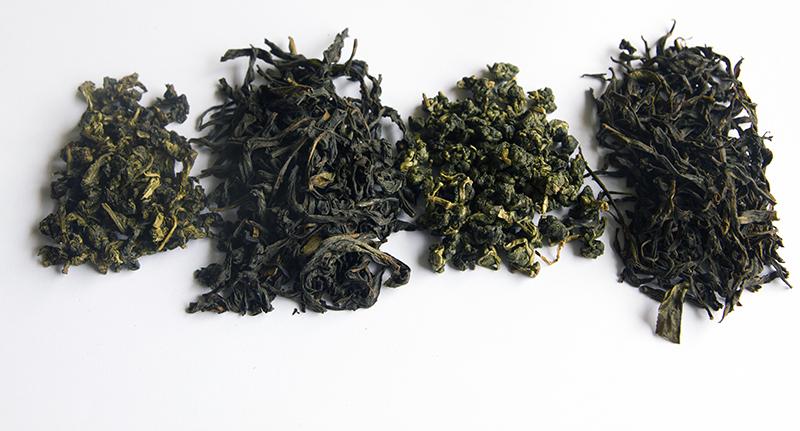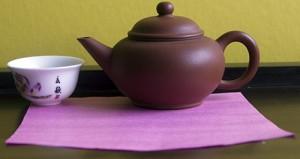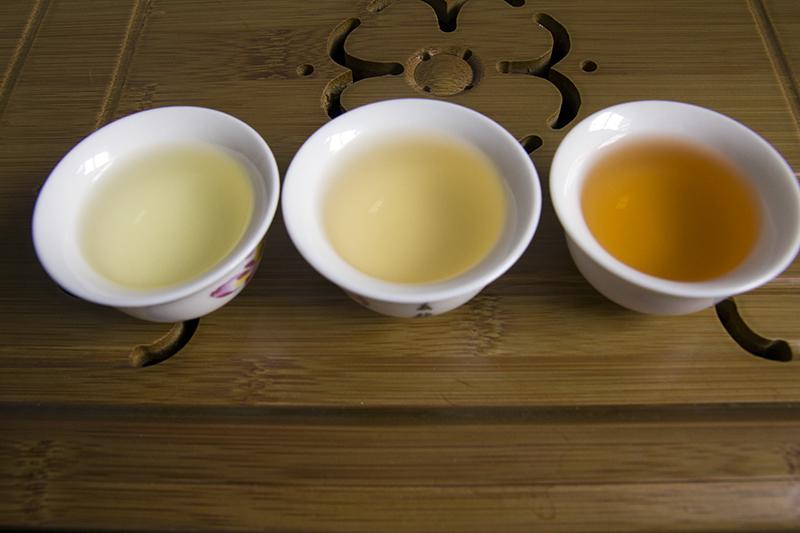One of the hardest questions I have ever been asked is “what is the typical taste of an oolong?”
Having consumed copious amounts of oolong ranging from diverse varieties, I can’t answer that question without doing grave injustice to my favorite category of tea.
It is like trying to give a one line answer to the question “what is a typical Asian lady like”- what your answer includes pales in comparison with what it excludes.
While oolong tea is grown primarily in 3 areas- Fujian, Guangdong and Taiwan- its diversity is far greater than say black tea which is grown all over the world but method of production is essentially similar and range of cultivars are less distinct.
What gives Oolong its Diversity?
As mentioned in this post, 7 main factors influence the taste of tea.
In oolong tea, the diversity is in 4 main areas:
-Roasting/Baking levels
- Harvest environment
-Cultivar
-Level of Oxidation

Level of oxidation is also very much unique to oolong tea, at least in terms of its range. By varying the length of withering as well as ‘rattling’ stage, the level of oxidation can vary from ~5% to above 70%.
The most classic examples of the 2 ends of this spectrum would be Wenshan Baozhong (5%) and Oriental Beauty (~70%).
No other category of tea has the same diversity.
Green tea for example, is substantially un-oxidized. Black tea- though traditionally considered fully oxidized- has oxidation levels hovering around the 90s.
This level of oxidation is often responsible for the diversity of the “typical oolong taste”.
However it still doesn’t quite explain the diversity.
4 Main Sub-categories
While it is usually impossible to stereotype and overly simplify, teas within each sub-category of oolong tea would have a closer taste profile to one another.
This is a combination of the production style, harvest environment and cultivar.
The 4 main sub-categories are based on geographical location though if you understand Chinese culture, region often comes to depict a certain style as well.
The 4 categories are
i) Guangdong Oolong- Dancong and Phoenix Shuixian
ii) Minbei Oolong- Wuyi Yancha and JianOu teas
iii) Minnan Oolong- Tieguanyin, Sezhong, Yongchun Foshou etc
iv) Taiwanese Oolong- Taiwan High Mountain teas, Oriental Beauty, Wenshan Baozhong, Muzha Tieguanyin
*More on these categories can be found on the links above.
Understanding the Diversity
Though within each sub-category, there is significant difference- none more so than the Baozhong-Oriental Beauty contrast, a understanding of each sub-category helps us to wade through the seas of oolong and find a port(s) to berth.

While there is no “typical Dancong”- you can expect honey, lychee, almond, cassia, magnolia among 10 main fragrances and 77 sub-fragrances- traditional, authentic Dancong is characterized by a few things:
- Zesty bite
- Long lingering aftertaste
- Thick mouth feel
- Presence of bitterness (though this can be reduced by brewing technique)
- Strong distinct aroma that continues through at least 3-4 infusions
*A lot of lower grade and non-traditional Dancongs are actually sweet and light but that is a story for another post.
Production Style
Roasting/baking and level of oxidation is one way of understanding the diversity.

The ‘green’ style is low in roast and baking levels- often known as ‘qing xiang’ (floral aroma).
The traditional styles are high in roasting levels and oxidation- known as ‘nong xiang’ (thick aroma) though this can vary as well.
In theory, a Tieguanyin is made from the Tieguanyin cultivar and grown within Anxi region. Naturally there is a difference in the taste of a Xiping Tieguanyin and Xianghua Tieguanyin (2 different villages) but that is a bit more advanced.
Hence by comparing a green, heavy roast, charcoal roast and double baked version, you can get a decent feel of the impact of production on the taste of oolong.
Harvest Environment
Since the 80’s, there has been an explosion in the popularity of Taiwan High Mountain teas. Throughout Taiwan, the production method is essentially SOP-ized and replicated in various mountains including Alishan, Shan Lin Xi, Lishan and Dayuling.
The cultivar used is predominantly Qingxin, followed by a smattering of Jinxuan and to a lesser extent Cuiyu.
The method of production is quite standard as well- at least as compared with say a Wuyi Yancha and a Minnan Sezhong.
Hence this provides students of tea with an excellent opportunity to study the impact of harvest environment- notably elevation- on the taste of tea.
Cultivar
A good way to study the impact of this is through Wuyi Yanchas. The area that produces tea that can be officially called ‘yancha’ spans 70 square kilometres or so.
By tasting teas such as a Rougui and a Shuixian from the same producing, one can learn to discern the difference between cultivars and their characteristics.
Others
To get deeper, you can also study beyond cultivars such as cultigens- i.e. specific trees- how to discern a genuine ‘old bush Shuixian’ or the difference between a Mi Lan Xiang Dancong and a Xin Ren Xiang Dancong for example.
All in all, studying about oolong tea alone should take you about 3 lifetimes to wade through J
But we hope this roadmap helps you find your path and enjoy the journey through the world of oolong.
To learn more about oolong tea, join us for our oolong tea workshops where you can taste through the 4 sub-categories of oolong, learn the distinct brewing styles and bring back samples to enjoy.
Learn more about our oolong tea workshops here or sign up here.
See more articles on overviews of various categories of tea
